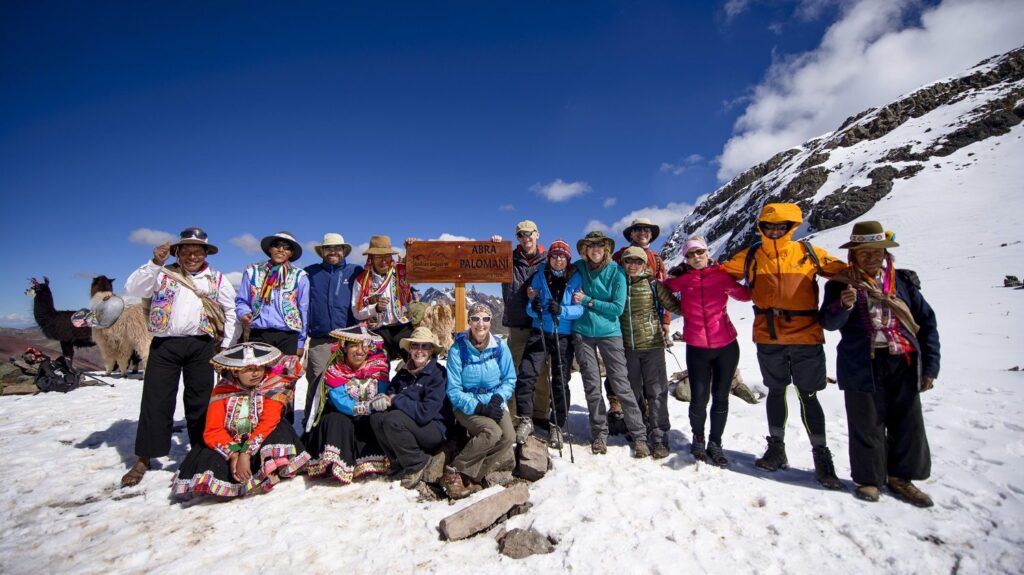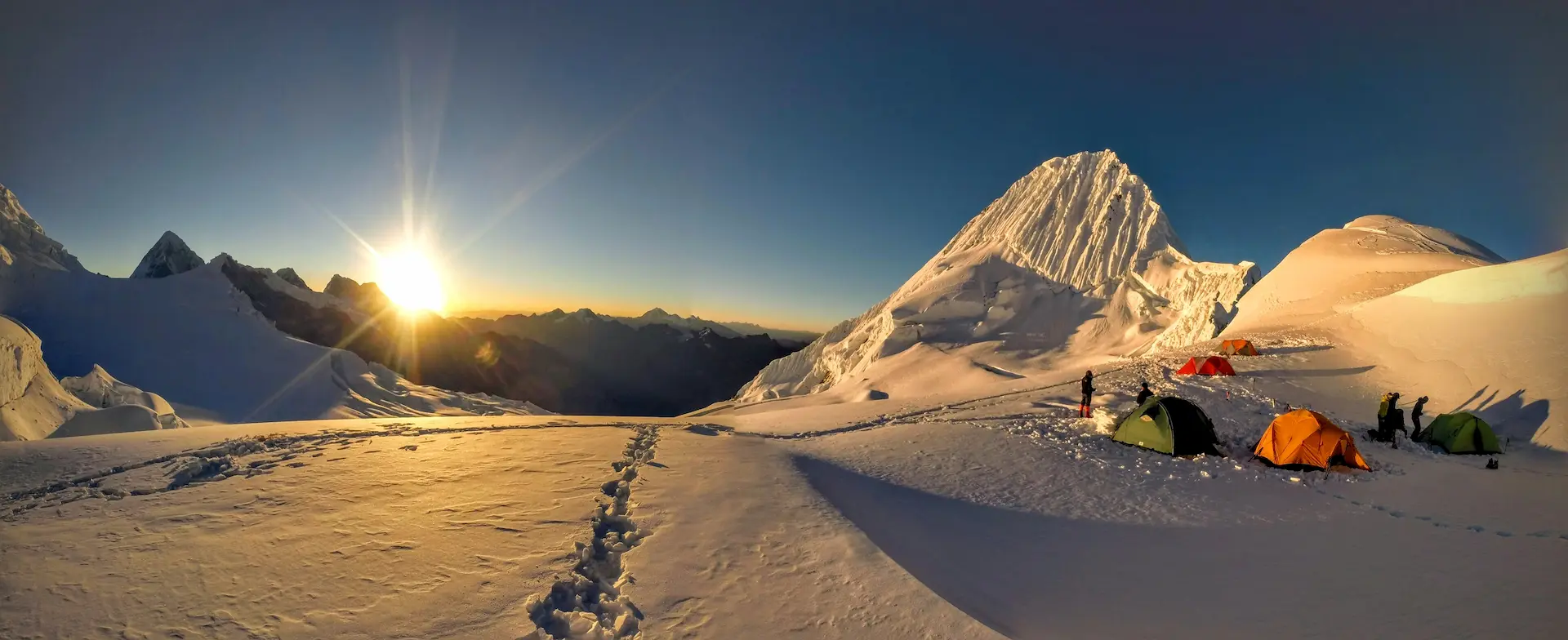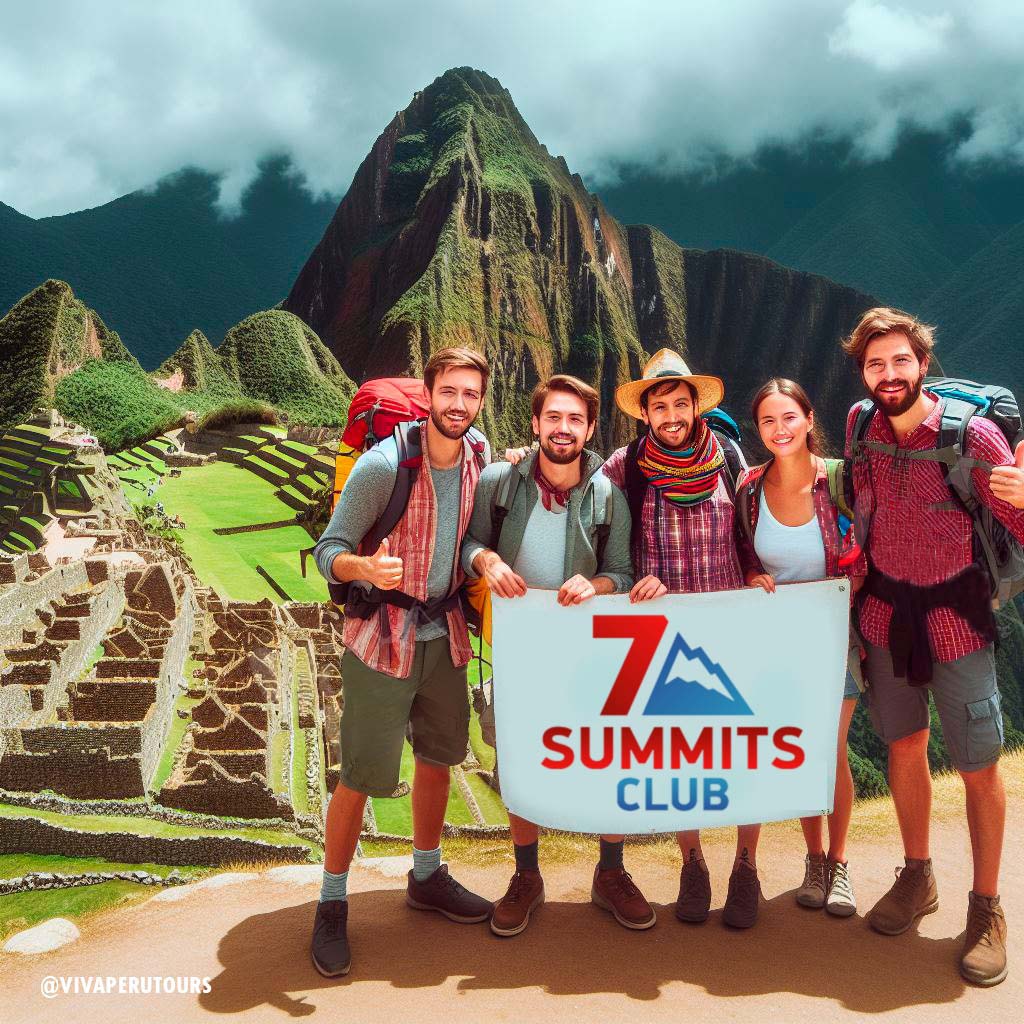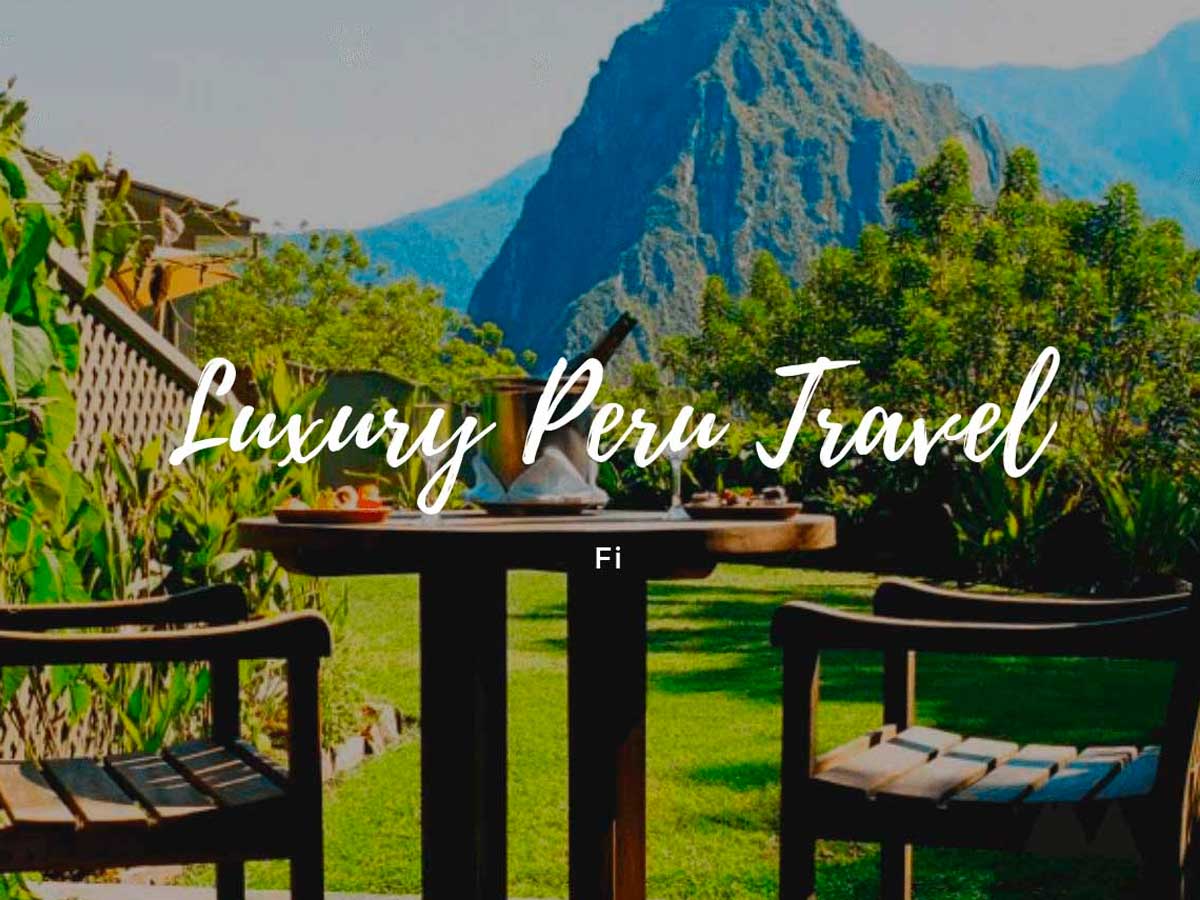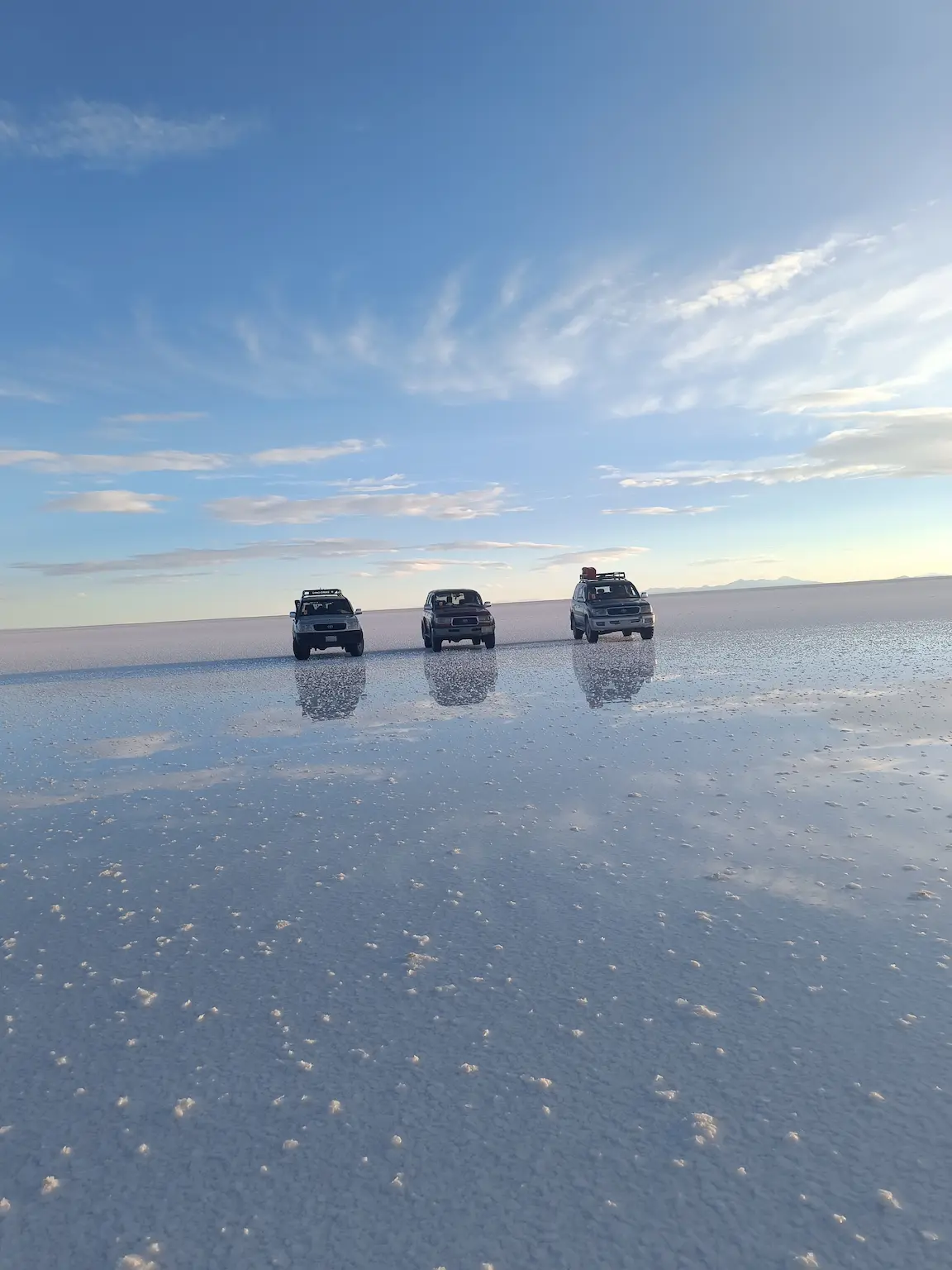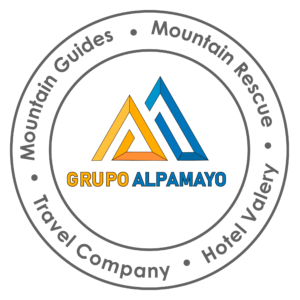Ausangate Trek the Ultimate Trekking Guide
Ausangate, the highest mountain in Cusco, emerges from the south of the cradle city of the Inca empire. This incredible mountain is home to one of the most diverse and incredible multi-day hiking circuits in Peru: the Ausangate trek.
The Ausangate Trek is a high-altitude hike in the Andes mountain range. It offers an «off the beaten track» experience boasting turquoise lakes, glaciers, snow-capped mountains, thermal baths, and many wildlife species. The pathway never dips below 4,200 meters (13,779 feet) along the classic 5-day trek route that goes around the mountain.
The Ausangate Trek is remote. Be prepared to walk in-route among hundreds of alpacas and llamas. If you’re lucky, spot wild vicuas roaming across the Alpine landscape. There is a plethora of viscachas, a high-altitude rodent, bouncing jovially along the path.
Overview
A tour to Ausangate Mountain is one of natural beauty, living history, and ancient spirituality. Nowadays, there are different trekking routes, from 2 days of hiking just on the north face of the mountain and visiting some beautiful lakes to a 6-day trek that consists of hiking around the mountain with the option to visit the famous Rainbow Mountain. This is recommended for seasoned hikers who have experience hiking at high elevations. The route takes you through the Cordillera Vilcanota, or the Vilcanota Mountain Range. Ausangate is actually the 5th tallest mountain in Peru, standing at 6,384 meters or 20,945 feet above sea level.
How many days are needed for the Ausangate Trek?
Quick overview of the multiple Ausangate Trek routes
Actually, the Ausangate Trek as multiple routes that can combine different outstanding spots along the trek, there are many companies who offer a varied of treks that can fit into your travel plan.
From day treks that involves to visit juts the seven lakes located at the north face of the Ausangate mountain, to multiple-day challenging treks which takes you to incredible landscapes around the mountain.
Let see the difference of each trek below:
Ausangate Day Tour:
This tour was designed for people who do not have a lot of time to explore our multi-day tours. It takes you to enjoy the incredible «Seven Lakes» of Ausangate, where you will visit the different lakes just at the bottom of the Apu. If you find the hike difficult, horses are available to transport you.
• Max. Altitude: 4680 m (15,354 ft)
• Difficulty: Moderate challenging
• Hike Distance: 13 km / 8 miles
• Season: April – November
Ausangate Trek 2-Day:
The 2-Day hike allows you to visit more lakes than the normal Seven Lakes tour. You will also have a night camp with a stunning starry sky away from the city lights and enjoy the most incredible, breathtaking vistas while you hike close to snow-capped mountains and see some herds of alpacas and llamas.
• Max. Altitude: 4720 m (15,485 ft)
• Difficulty: Moderate challenging
• Hike Distance: 18 km / 11,1 miles
• Season: April – November
Ausangate Trek 4-Day
Vidal Expedition is the only tour company that operates this route and offers a unique way to experience the incredible Ausangate Trek. On this tour, you will enjoy the north-east face of the mountain and its different landscapes. It combines the Seven Lakes tour, Ausangate, Palomani Pass, and Rainbow Mountain as the final destination.
It is a less-known route, and tourists rarely hike along it, making it ideal for those who want to avoid crowds.
• Max. Altitude: 5,200 m (17,060 ft)
• Difficulty: Challenging
• Hike Distance: 48 km / 29 miles
• Season: April – November
Ausangate Trek 5-Day
This multi-day Trek offers a complete experience, following the classic path that goes around the mountain. It begins in Tinki and ends at the same place. On this classic Ausangate trek, you will enjoy the most stunning views that combine picturesque villages, green valleys, snow-capped mountains, lakes, and a large herd of alpacas, as well as wildlife.
You will have the option to include the hike to Rainbow Mountain if you prefer.
• Max. Altitude: 5,200 m (17,060 ft)
• Difficulty: Challenging
• Hike Distance: 67 km / 41 miles (79 km with Rainbow Mountain)
• Season: April – November
Ausangate Trek 6-Day:
This is well recommended for those who want to hike slowly and extend their days. It is the same circuit as the 5-day trek; however, this included the Rainbow Mountain and made the hike shorter every day on the tour.
• Max. Altitude: 5,200 m (17,060 ft)
• Difficulty: Challenging
• Hike Distance: 79 km / 49 miles
• Season: April – November
Have a look at our map to see how these routes go on the Ausangate Mountain.
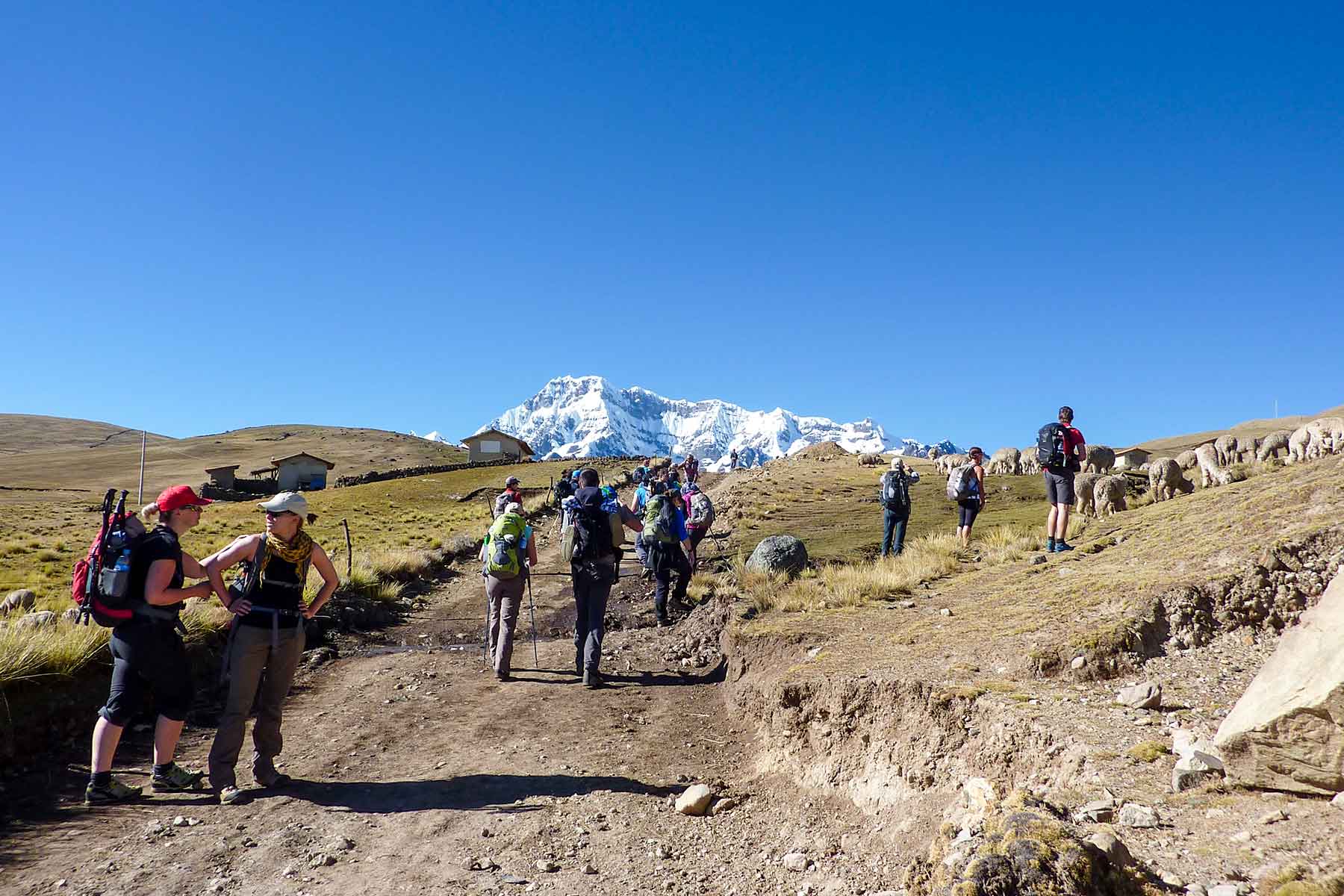
When is the best time to hike the Ausangate?
As a local tour operator with years of experience on this route, we know very well when is the best season to hike on this beautiful trek.
May to October is the best season that you can hike Ausangate; this is the well-marked dry season in Cusco with rare rains or snow per month, while the rainy season is from November to April with some rare sunny days per week. February is the month where we don’t take people on this tour due to the heavy rain that you could find around Ausangate; as we mentioned before, this is a high-altitude trek and the storms or lightning are frequently in the area. For your security, we don’t suggest exploring this area this month.
Ausangate is located in the middle of the Andes at over 4,000 meters, and that is why the area is always cold and windy, especially during the afternoon after the sunset. However, the best month to explore this beautiful area is May, when the valleys are still green once the rains have passed.
What is the weather like on the Ausangate?
Basically, the trek takes you on the mountain, where the weather could change quickly during the day. In these areas, even the forecast does not work due to the altitude and the high mountains, which change the wind directions easily. Nevertheless, the weather does not vary during the dry season, where the temperatures range from 15 to 25 Celsius during the day. And it could descend to below zero during the night.
We recommend bringing some warm clothes, especially the down jackets. Some gloves and bandanas will help you keep warm.
Spiritual significance
In Andean spirituality, the mountains, called Apus, are highly revered and believed to have a spirit. In fact, in Quechua, Apu means lord. These powerful spirits are believed to protect the local people in the highlands. Ausangate Mountain stands with 11 other sacred Apus of the Cusco area, namely Salkantay, Mama Simona, Pillku Urqu, Manuel Pinta, Wanakawri, Pachatusan, Pikchu, Saksaywaman, Viraqochan, Pukin and Sinqa.
Rainbow Mountain side excursion
Another compelling aspect of the Ausangate trek is that you can conveniently arrange to do Rainbow Mountain as a side excursion. Rainbow Mountain, or Montaña de Siete Colores, is a very popular destination. Here you can see these iconic mountains before the crowds arrive from the day tour, so doing the Ausangate Trek has the advantage of exploring this area, plus the red valley early in the morning since the campsite is at the bottom of the Rainbow Mountain.
Altitude Sickness
Traveling to destinations at high altitudes can be exciting, challenging, and rewarding. However, there are risks associated with high altitude, including developing altitude sickness and being exposed to ultraviolet (UV) light and cold temperatures.
Altitude sickness, also known as mountain sickness, is popular along the Ausangate Trek due to the high elevation.
Why is it happening? At altitude, the air pressure is lower, which means there is less oxygen available to your body when you breathe. We need oxygen for our bodies to work properly. The process of your body adapting to the lower oxygen levels is called acclimatization, and it takes about 3 to 5 days.
What are the symptoms of altitude sickness in Cusco?
Minor symptoms include headaches, fatigue, difficulty sleeping, and dizziness. More advanced cases can result in vomiting, shortness of breath, and high-altitude cerebral edema, which is associated with lethargy, nausea, and disorientation.
At Vidal Expeditions, we know this trek is located at a high altitude, and we recommend to all our customers that they have some previous days in Cusco to acclimatize to the altitude before hiking the Ausangate Trek. Our trekking team will always carry an oxygen tank in case you need it during the hike. Our team is well prepared for any emergency that can occur during the trek.
Ausangate Trek Pack List
At Vidal Expeditions, we recommend packing lightly for the Ausangate Trek. Generally, hikers leave the bulk of their belongings safely in storage at their Cusco hotel and bring only their hiking pack for the trek. A night before the departure, you will have a briefing from your trekking guide, who will provide more details about the itinerary that you will follow on your tour. You will also get a duffel bag to fill with your personal belongings. This list ensures that you have everything you need for a guided trek without overburdening yourself.
Clothing
• Long sleeve hiking shirt
• Hiking pants
• Thermal shirt for sleeping
• Long thermal pants for sleeping
• Fleece
• Wool socks (2 pairs)
• Socks for sleeping
• Gloves
• Beany
• Underwear (2-3 pairs)
• Sports bra (for women)
Footwear
• Hiking boots with ankle support
• Flip-flops/comfortable shoes for camp
Weather gear
• Hat/cap
• Sunglasses
• Sunblock
• Lip balm with SPF
• Rain & wind proof jacket
• Poncho
• Rain cover for the backpack
Hiking gear
• Backpack, 50-70L
• Hiking poles (optional but recommended)
• Water bottle
• Zip-lock bags (for money, maps etc.)
Electronics
• Phone
• Camera
• Earphones
• Headlamp
• Flashlight
Toiletries
• Soap
• Dry shampoo
• Toothbrush
• Toothpaste
• Deodorant
• Hand sanitizer
• Wet wipes
• Small towel

Tipping for the trekking team
Tipping the trekking team on any excursion is a big tradition in Peru; this is not mandatory on a guided Ausangate Trek, but it is highly recommended. Although we pay very good salaries to our entire team, tips are welcome as a token of your appreciation for the team’s hard work.
A good rule of thumb is 60–100 soles ($30–$40) per hiker. All the hikers on the team can pool their tips and then hand them to the trekking team, which will distribute them among themselves.
Daily itinerary of the Ausangate Trek 5 Days / 4 Nights
Below is a daily itinerary and highlight breakdown of the classic 5-Day Ausangate trek.
Day 1: Cusco – Tinki – Upis
We depart Cusco early in the morning (6:30am) for a long three-hour drive in a private van to Tinki village (3800 masl. / 12,464 feet). As Tinqui is located on the new Interoceanic Highway, we can now arrive here much more quickly than in previous years. We pass through beautiful countryside and several traditional villages, including Urcos and Ocangate. After a short rest in Tinki, we will continue driving to Rodeana (3,900 m/12,795 ft). The beginning of our hike; the first three hours on the trail are a wonderful prelude to the magnificent scenery of the Cordillera Vilcanota, where we get to the lunch spot at Upis (4224 m/13,864 ft) with great views of Ausangate. Here you will have the option to enjoy the hot springs, which offer fantastic views of Ausangate Mountain at the end of the valley. We will camp here for the night.
Day 2: Upis – Arapa Pass – Puqaqocha – Ausangate Qocha
After the delicious breakfast, we will be heading to the first pass. after a few hours, we will cross the Arapa pass (4,850 meters/15908 feet). Here you will have a breathtaking view of Ausangate’s west face and some colored mountains around. From here, we continue down the valley, passing the green lake of Puqa Q’ocha, until we reach the turquoise Lake Jatun PuqaQ’ocha, where we will take our lunch with an incredible view of the mountain. We ascend the second pass of Ausangate (5,020 meters/16,469 feet) with stunning views of Ausangate; here you can feel the energy of this Andean deity and understand why it is very important for the Andean people. You also will appreciate the lakes located at the bottom of the Apu. These lakes are fed by the melting snow of Ausangate. Afterwards, we continue hiking down to Ausangate Qocha (4,570 m/14,993 ft).
Take Note:
As we mentioned, on this classic Ausangate Trek you will have the option to include the Rainbow Mountain, which needs to be coordinated with your tour guide and the other members of the group. (If you decide to include this option, the itinerary must be changed.)
Day 3: Ausangate Qocha – Palomani Pass – Qampa Pampa
Our team will wake you up early this day with a hot Coca tea in order to see the sunrise once we arrive at the Palomani Pass. Then, we are heading up to the highest point on this Ausangate trek at 5,200 m (17,060 ft). From here, we will appreciate the south face of the Ausangate Mountain. This is the pass where you’ll be as close as possible to the Apu, and your tour guide will do a ceremony to say thanks to Mother Earth (Pachamama) for this extraordinary adventure. From the pass, we follow the trail into the valley. While you are descending, you can appreciate a nice lagoon and the glacier on your left. Then we’re going to hike towards our lunch spot. After the lunch rest and with the energy recharged, we continue our hike to Qampa Pampa to spend the night.
Day 4: Qampa Pampa – Qampa Pass – Pachis Pata – Pacchanta
last day to enjoy the snow-capped mountains located near the path, and our team will prepare the Inca breakfast for you. Then, we begin the climb towards the last pass of the Ausangate Trek, after some hours of breathtaking vistas and probably having the chance to observe some wild Vicunas and more snow peaks as the Tres Picos is a very steep mountain. We reach Qampa Pass, elevation 5080m (16,660 ft). During the afternoon hike, we can enjoy the views of the snow-capped Puca Punta. We will continue through the broad green valley to Pachis Pata, where we will have lunch and get ready for the final section with beautiful turquoise lakes and reach Pacchanta town.
Day 5: Pacchanta – Cusco
Today being the easiest and final day of the trek, our team will prepare the last meal, which is a typical tradition in the Andes after a hard day’s work. The local people will show you some weaving traditions, and you can buy some souvenirs from the area. We finally board our bus to return to Cusco, and the bus will drop you off at your hotel.
